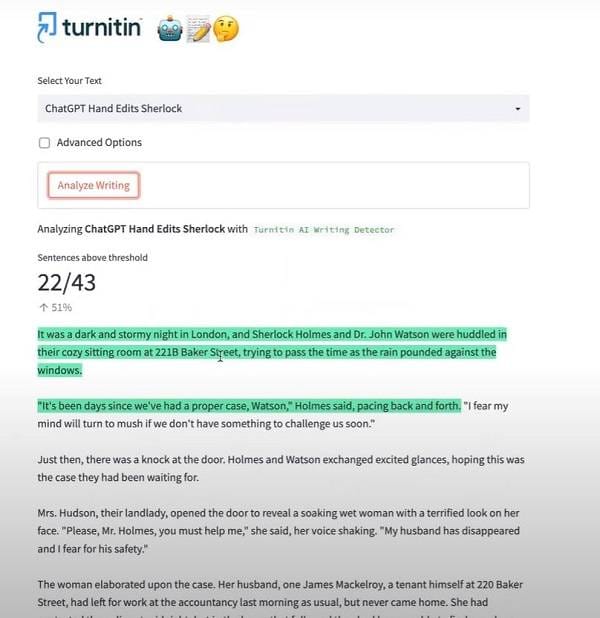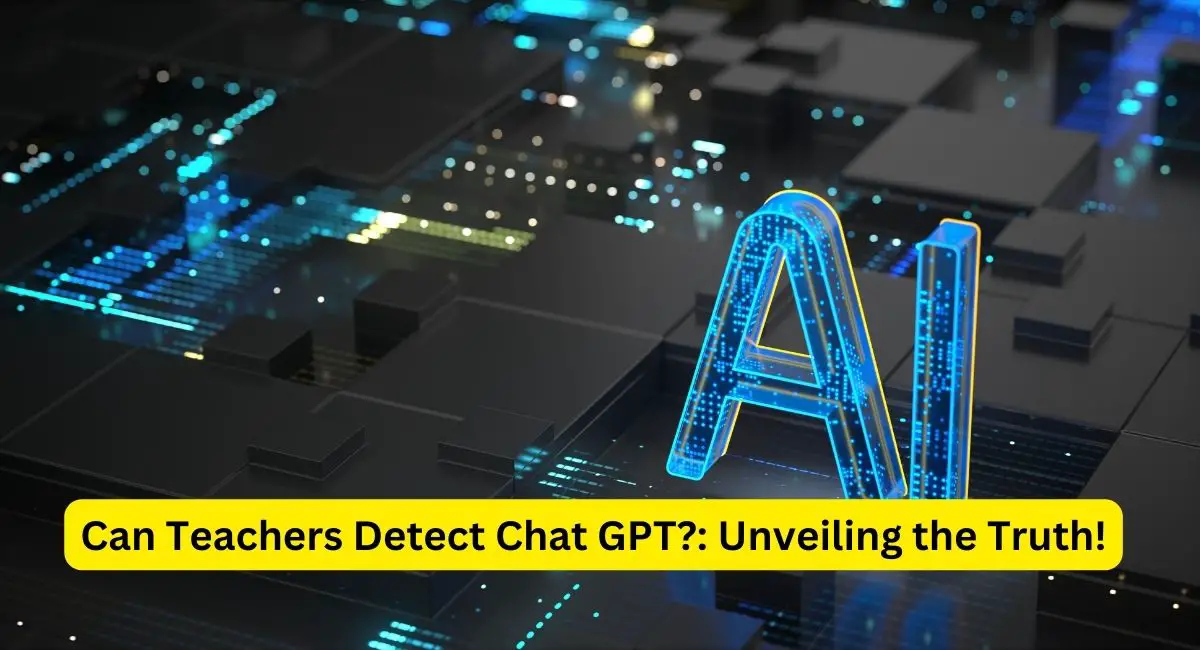Teachers can detect ChatGPT usage by recognizing its distinct writing patterns. Advanced tools and language inconsistencies may also alert educators to AI-generated content.
In the age of burgeoning artificial intelligence capabilities, educators are increasingly facing the challenge of identifying work that hasn’t been crafted by their students’ own hands. ChatGPT, a sophisticated AI text generator, can produce essays and answers that mimic human writing, presenting a dilemma for academic integrity.
To preserve the quality and authenticity of educational assessments, teachers are turning to a variety of strategies. They examine writing for telltale signs of AI, including unnaturally polished language or an analytical style that seems beyond the student’s usual capabilities. Developments in detection software also provide a technical line of defense, analyzing text to pinpoint characteristics indicative of machine generation against human creativity. With education and technology evolving side by side, the detection of AI like ChatGPT remains a hot topic in academic circles.
Introduction To Chatgpt’s Influence In Education
As artificial intelligence (AI) advances, ChatGPT emerges at the educational forefront. This powerful tool is reshaping the way teachers teach, and students learn. A wave of transformation, driven by AI, promises innovative learning experiences but comes with its set of challenges.
Rise Of Ai In Classrooms
AI tools like ChatGPT are becoming classroom staples. These tools offer personalized learning and instant homework help. They foster engagement through interactive elements.
Students find learning exciting with AI. Teachers use these tools to enhance teaching. Let’s explore how ChatGPT changes classrooms:
- Individualized attention: AI tailors learning for each student.
- Quick feedback: Students receive instant help and corrections.
- Learning support: AI provides additional resources for understanding.
Challenges Posed By Ai Writing Tools
While AI brings benefits, it also poses challenges. ChatGPT‘s ability to generate essays and answers raises concerns.
Teachers are adapting to detect AI-generated content. Here are some issues educations face:
- Authenticity: Assessing if student work is original becomes difficult.
- Quality control: Ensuring AI assistance doesn’t replace learning is a priority.
- Educational integrity: Maintaining a level playing field for all students is key.

Credit: www.npr.org
The Telltale Signs Of Ai-written Texts
Sleuthing out AI-written text requires a keen eye. Teachers stand on the front lines of this detection. They note peculiarities that suggest a student didn’t craft the text. Artificial intelligence, strong as it may be, leaves behind a unique fingerprint. Know these fingerprints, and AI-generated content reveals itself.
Lack of Personal Voice and Anecdotes
One of the biggest giveaways lies in the text’s heartbeat. Or rather, its lack. Personal voice gives life to writing. AI struggles to replicate this. Students’ works often contain unique stories or examples. They share insights from their daily experiences. These elements are notably absent in AI-generated content.
Overly Standardized Vocabulary
- AI chooses safe, neutral words.
- NNoun-abjective pairings often sound textbook-like.
- Conversations about school cafeteria food don’t mention “delectable”.
Unusual Syntax and Repetitive Patterns
Syntax quirks set AI apart. It leans on familiar structures, risking odd sentences. Expect to see repetition—not just of words, but of phrasal rhythms.
| Syntax Quirk | Example |
|---|---|
| Unnaturally Perfect Structure | Every sentence is meticulously constructed, lacking the flair of human error. |
| Repetitive Patterns | AI often repeats the same sentence structures throughout a paragraph. |
Tools And Strategies For Detection
As digital tools like ChatGPT become more common, educators are gearing up with effective Tools and Strategies for Detection to ensure academic integrity. These methods not only help in identifying AI-generated content but also promote a deeper understanding of student learning.
Plagiarism Checkers Adaptation
Modern plagiarism checkers have evolved. They detect not just copy-paste incidents but also AI-generated content. Tools such as Turnitin and Copyscape are widely used. They are constantly updated to catch the nuances of AI writing. Here’s what they offer:
- Database Cross-referencing: Monitors billions of web pages for exact or similar matches.
- Style Analysis: Spots anomalies in writing style that may suggest AI usage.
- Continuous Updates: Evolves to keep up with AI writing trends and patterns.
Text Analysis Software: Beyond Copy-pasting
Text analysis software offers a step beyond traditional methods. These tools scan for statistical oddities and linguistic patterns. AI writing tends to have certain identifiable markers. For example:
- Lack of Personality: AI-generated texts often miss the personal touch seen in human writing.
- Excessive Standardization: Uniform structure and phrasing can signal non-human authorship.
Creating ‘ai-proof’ Assignments
Designing assignments that challenge the capabilities of AI is emerging as a clever approach. These tasks demand creativity, personal reflection, and real-world problem-solving. Here are ways to tailor assignments:
- Focus on personal narratives that are unique to the student’s experience.
- Incorporate current events that AI may not be updated on.
- Emphasize group discussions and presentations to verify individual understanding.

Credit: pdf.wondershare.com
Pedagogical Approaches To Ai Literacy
Educators globally grapple with tools like ChatGPT. Utilizing artificial intelligence impacts how students learn. Pedagogical approaches need shifts. AI literacy becomes a crucial learning component. Teachers discern AI’s role in education. They promote responsible AI use. Strategies evolve to address this tech infusion.
Incorporating Ai Education In Curriculum
Fostering AI understanding starts with curriculum integration. A well-rounded education now embraces technology. Lessons crafted to introduce AI concepts help. They ensure students develop a solid base in artificial intelligence.
- Basics of AI operations demystify technology.
- Activities align with real-life AI applications.
- Collaborative projects spark innovative thinking.
Promoting Ethical Use Of Ai Among Students
Ethical AI use is pivotal. Teachers guide students on AI’s impact. Discussions foster critical thinking. Kids learn about privacy, security, and fairness. They understand responsible digital behavior. Ethical discussions shape future tech users.
- Case studies expose students to moral dilemmas.
- Role-play sessions enable understanding consequences of misuse.
- Debates encourage diverse perspectives on AI ethics.
Teachers Upskilling On Ai Trends
To detect AI like ChatGPT, teachers stay informed. Professional development focuses on up-to-date AI knowledge. Workshops and seminars provide learning platforms. Being tech-savvy is non-negotiable. Teachers lead by example in AI adoption.
- Online courses offer convenient AI mastery.
- Peer learning sessions encourage knowledge sharing.
- Community partnerships provide practical AI insights.
Embracing Change: Positive Uses Of Chatgpt In Teaching
The landscape of education constantly evolves with new technologies. ChatGPT represents a paradigm shift, bringing innovative tools into classrooms around the globe. It’s not just a question of whether teachers can detect its use; it’s about harnessing its potential to positively enrich the educational process. Let’s explore how teachers can integrate ChatGPT to add value to their teaching methods.
Enhancing Creative Writing With Ai Prompts
Creative writing can be daunting for students. ChatGPT offers stimulating prompts, sparking imagination and helping overcome writer’s block.
- Generating ideas: ChatGPT can produce diverse writing prompts, catering to various interests and age groups.
- Storytelling guidance: It can suggest story arcs or character developments, guiding students in crafting compelling narratives.
- Vocabulary expansion: ChatGPT introduces new words and phrases, enriching students’ language arsenal.
Customizing Learning Experiences
Every student learns differently. ChatGPT adapts to individual learning styles, offering personalized educational experiences for optimal engagement.
| Feature | Benefit |
|---|---|
| Interactive QA | Students get immediate answers to their questions, promoting active learning. |
| Personalized Revision | ChatGPT creates custom practice tests tailored to student’s proficiency levels. |
Ai As A Supplement For Teachers
Teachers can view ChatGPT as a collaborative partner. It’s there to support, not replace, the irreplaceable human touch of educators.
- Curriculum development: ChatGPT assists in creating lesson plans that are engaging and up-to-date.
- Automated grading: It helps with assessing multiple-choice tests, allowing more time for personalized student feedback.
- Research aid: ChatGPT serves as a quick reference tool for checking facts and summaries.
Future Of Education In An Ai-dominant World
As technology advances, the education sector experiences transformative changes. Artificial intelligence (AI) stands at the forefront, poised to reshape how students learn and teachers instruct. With AI tools like ChatGPT playing increasingly prominent roles, the traditional classroom is evolving. Teachers must adapt to new methods, involving both challenges and opportunities.
Evolving Roles Of Teachers And Technology
The integration of AI tools like ChatGPT in education compels a shift in the role of teachers. They transition from knowledge-holders to facilitators and guides. AI can offer personalized learning experiences, so teachers focus on nurturing critical thinking and creativity. Collaboration between teachers and technology ensures that education is dynamic and tailored to individual needs.
Policy And Ethical Considerations For Ai Utilization
- Ethical AI use in classrooms: Safeguards must protect student privacy and data.
- Access to technology: Schools need fair AI access for all students.
- Educator training: Teach the teachers how to incorporate AI effectively.
Together, educators, policymakers, and tech developers must design frameworks that bolster effective and ethical AI usage. Such coordination can optimize AI’s role in education while minimizing potential risks.
Preparing For Advanced Ai Integration
Preparing both teachers and students for an AI-enhanced education is critical. This starts with improved literacy in digital tools and concepts for all education stakeholders. Training programs can empower educators, while revised curricula could integrate AI awareness and competencies at an early stage. By doing so, the future generation becomes equipped for the digital era.

Credit: www.sciencenews.org
Frequently Asked Questions Of Can Teachers Detect Chat Gpt
Can Professors See If You Use Chatgpt?
Professors cannot directly see if you use ChatGPT. It lacks a tracking mechanism to notify them. However, they may suspect its use based on the writing style and content consistency with your previous work. Always maintain academic integrity when completing assignments.
Can School Tell If You Use Chatgpt?
Schools can detect ChatGPT use by analyzing writing style deviations and using plagiarism detection tools designed to flag AI-generated content.
Can Chatgpt Be Detected?
Yes, ChatGPT output can be detected using specialized AI detection tools designed to differentiate between human and AI-generated text. These tools analyze writing patterns to identify the origin.
Is Chatgpt Traceable?
ChatGPT’s interactions can be traceable by the service provider for platform monitoring and improvement purposes. The user’s identity remains anonymous unless voluntarily shared during interaction.
Conclusion
Educators are on the lookout for AI-generated content. As technology evolves, so do methods to spot its usage. It’s vital for students to harness such tools responsibly and for teachers to stay informed. Striking a balance between innovation and academic integrity will shape the future of education.
Remember, originality always stands out.

